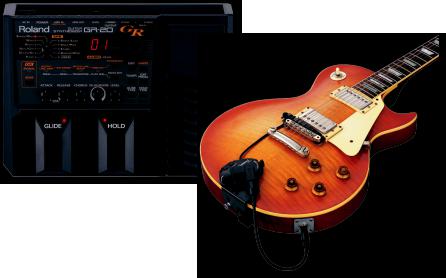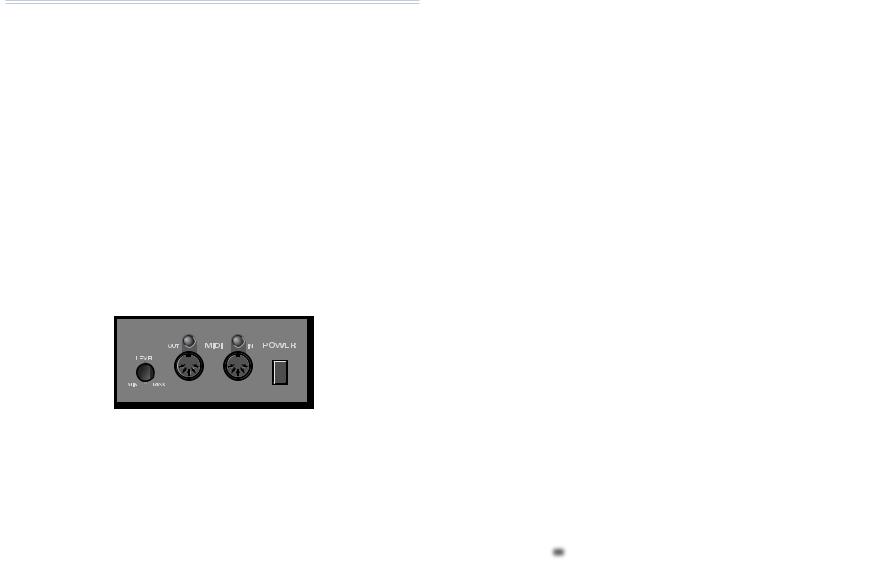Roland Gr-20 User Manual

®ÂØÒňή |
Workshop |
|
|
|
|
|
|
|
GR-20 Guitar Synthesizer
Using the GR-20 with a Sequencer
© 2006 Roland Corporation U.S.
All rights reserved. No part of this publication may be reproduced in any form without the written permission of Roland Corporation U.S.
GR20WS03

About the Workshop Booklets
Roland’s GR-20 Guitar Synthesizer opens up spectacular new sonic possibilities for the electric guitarist. With the included GK-3 Divided Pickup installed, any six-string electric guitar can play the GR-20’s amazing collection of synthesizer sounds and sampled real-world instruments. You can also mix your guitar’s own sound with those in the GR-20 to create new timbres that are all your own.
Each GR-20 Workshop Series booklet focuses on one GR-20 topic, and is intended as a companion to the GR-20 Owner’s Manual.
This booklet requires GR-20 O.S. Version 2.00 or higher. You can download the latest GR-20 O.S. for free from www.RolandUS.com.
About This Booklet
A MIDI sequencer captures and plays back MIDI performances. It’s a powerful tool that allows you to layer multiple performances, and do all sorts of things to hone your sequenced music to perfection. The GR-20 provides a way for you to record MIDI data into a MIDI sequencer from your guitar, using the GR-20’s own sounds or any other MIDI sounds you like. This booklet explains how to sequence with the GR-20.
Understanding the Symbols in This Booklet
Throughout this booklet, you’ll come across information that deserves special attention—that’s the reason it’s labeled with one of the following symbols.
A note is something that adds information about the topic at hand.
A tip offers suggestions for using the feature being discussed.
Warnings contain important information that can help you avoid possible damage to your equipment, your data, or yourself.
Hot Links
Each Workshop booklet is meant to be read in order from beginning to end. However, if we mention an upcoming section—and you see this arrow—you can click the arrow to jump there immediately.
About MIDI, Sequencers, and the GR-20
If you’re experienced with MIDI and sequencers, feel free to skip this section.
A full discussion of MIDI is beyond the scope of this booklet—in fact, we have an InFocus booklet devoted entirely to MIDI called An Introduction to MIDI. You can download this booklet from the Support Documents section of the Roland US website.
Meanwhile—if you just want to get started—there are three basic things you really need to know about MIDI, sequencing, and the GR-20:
•MIDI isn’t sound, it’s instructions—When you play a MIDI instrument, your performance is converted into instructions that tell a soundproducing MIDI device what notes to play, and how to play them. These instructions are called “MIDI messages.”
•A sequencer—captures MIDI data, and can play it back. This can make a sequencer seem like an audio recorder, but it’s not: it’s just playing back instructions that cause a sound-producing MIDI device to recreate your performance. A sequencer, by the way, can be a software program on a computer, part of a keyboard workstation such as the Roland Fantom-X, or a standalone hardware device.
•Your GK-3 and the GR-20—convert your playing to MIDI data, which can play the GR-20 sounds and/or be transmitted to another device, such as a sequencer, from the GR-20’s MIDI OUT jack.
Many sequencers offer standard audio tracks in addition to MIDI tracks. You can, of course, easily record standard audio from the GR-20 into this kind of sequencer by simply connecting the GR-20’s OUTPUT jacks to the sequencer’s audio inputs. To learn about the GR-20 OUTPUT jacks, see the Getting Started with the GR-20 Workshop booklet.

Connecting the GR-20 to a Sequencer
On the Sequencer Side of Things
To connect your sequencer to the GR-20, the sequencer has to have a MIDI IN jack and a MIDI OUT jack. If you’re using a:
•hardware, standalone sequencer—you’ll typically find a MIDI IN jack and a MIDI OUT jack on its rear panel.
•keyboard workstation—you’ll typically find a MIDI IN jack and a MIDI OUT jack on its rear panel.
•sequencing program on a computer—MIDI connectivity has to be added to the computer in either of two ways. You can use a:
•MIDI interface— which is usually a rack-mounted or tabletop box that connects to the computer via USB or FireWire, and provides MIDI ports you can connect to your other MIDI devices.
•sound card—that offers MIDI jacks, or a game port to which you connect a special cable that provides MIDI jacks.
On the GR-20 Side of Things
Using a MIDI cable:
Connect the GR-20’s MIDI OUT jack to the sequencer’s MIDI IN jack.
Connect the sequencer’s MIDI OUT jack to the GR-20’s MIDI IN jack.
If you don’t intend to use the GR-20’s own sounds, you don’t need to connect the sequencer’s MIDI OUT jack to the GR-20’s MIDI IN jack.
Preparing the GR-20 for Sequencing
MIDI Channel
Select the basic MIDI channel on which you want the GR-20 to send and receive data. (As we’ll see, this channel also acts as the first channel the GR-20 uses in its Mono transmission mode.)
Unless you have a MIDI system that provides each MIDI device its own set of 16 MIDI channels, select a channel no other device is using.
To set the GR-20’s basic MIDI channel:
Press SYSTEM EDIT repeatedly until the MIDI CH indicator lights.
Turn the Number/Value dial to select a basic MIDI channel, from 1-11.Press EXIT—the GR-20 stores your settings.
Local Off
When you’re using a GR-20 patch while sequencing, notes can play twice: once from your guitar, and once more from the output of your sequencer.
1 The guitar plays the GR-20 note. 2 The GR-20 sends a note event to the sequencer via MIDI.
SEQUENCER
3 The sequencer plays the GR-20 note again.
